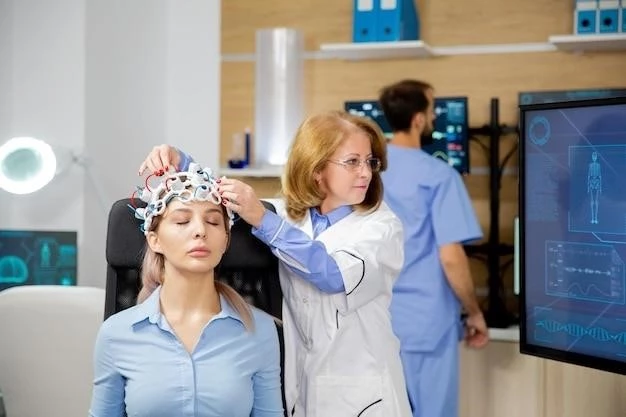Disease ⸺ Epilepsy, Benign Occipital
Benign Occipital Epilepsy, also known as Panayiotopoulos syndrome, is a common childhood epilepsy syndrome primarily seen in children․ This article will delve into various aspects of this condition, including clinical presentation, diagnosis, treatment options, impact on development, and long-term management․
Introduction to Benign Occipital Epilepsy
Benign Occipital Epilepsy, or Panayiotopoulos syndrome, is a relatively common form of childhood epilepsy characterized by focal seizures originating in the occipital lobes of the brain․ Children with this condition often experience visual hallucinations, headache, and may also have autonomic symptoms during the seizures․
Typically, Benign Occipital Epilepsy presents between the ages of 3 to 10 years, with a peak onset around 5 to 6 years of age․ The seizures in this syndrome are usually brief and self-limited, lasting typically for a few minutes․ Most children with this condition have normal neurological exams between seizures․
Diagnosing Benign Occipital Epilepsy involves a thorough evaluation of the child’s medical history, seizure description from caregivers, video-EEG monitoring, and neuroimaging studies such as MRI scans to rule out other underlying causes․ It is crucial to differentiate this benign form of epilepsy from more serious conditions presenting with similar symptoms․
Children with Benign Occipital Epilepsy may also exhibit developmental delays or cognitive impairments, further emphasizing the importance of early detection and appropriate management․ Treatment options include antiepileptic medications tailored to the individual’s seizure pattern and severity․
Clinical Presentation
Children with Benign Occipital Epilepsy often present with distinct clinical features that aid in the diagnosis of this condition․ One of the hallmark manifestations is visual hallucinations, which can range from simple patterns to complex images․ These hallucinations are commonly described as geometric shapes, colors, or faces․
In addition to visual symptoms, children may experience other sensory disturbances such as auditory hallucinations or altered perception․ Seizures in Benign Occipital Epilepsy can be accompanied by autonomic symptoms like vomiting, pallor, or altered heart rate․ Headaches, typically occurring post-ictally, are another common symptom seen in this syndrome․
During the seizure event, children may demonstrate focal neurological signs such as eye deviation, speech difficulties, or abnormal movements․ It is essential for healthcare providers to obtain a detailed description of these symptoms from caregivers to differentiate them from other types of seizures․
Interictal periods in Benign Occipital Epilepsy are typically unremarkable, with children returning to their baseline level of functioning between seizures․ The presence of developmental delays or cognitive impairments should also be assessed during the clinical evaluation to provide comprehensive care for affected children․
Diagnosis
Diagnosing Benign Occipital Epilepsy requires a comprehensive approach that involves a thorough evaluation of the child’s medical history, seizure description, and detailed neurological examination․ Healthcare providers rely on the description of seizure semiology, including visual hallucinations, autonomic symptoms, and headache, provided by caregivers or witnesses․
Video-electroencephalography (EEG) monitoring plays a crucial role in confirming the diagnosis by capturing the seizure activity and identifying the characteristic occipital epileptiform discharges․ These discharges are typically seen during or between seizures in the occipital regions of the brain, supporting the diagnosis of Benign Occipital Epilepsy․
Neuroimaging studies, such as magnetic resonance imaging (MRI), are often performed to rule out structural brain abnormalities or other causes of seizures․ While the imaging studies may appear normal in children with Benign Occipital Epilepsy, they are essential for excluding other conditions that may present similarly․
It is important for healthcare providers to differentiate Benign Occipital Epilepsy from other epileptic syndromes or focal onset seizures originating from different brain regions․ This distinction is critical as it influences the treatment approach and long-term management strategies tailored to the specific epilepsy syndrome․
Treatment Options
Management of Benign Occipital Epilepsy in children involves a tailored treatment approach aimed at controlling seizures while minimizing adverse effects on development․ Antiepileptic medications are the cornerstone of treatment, with the choice of medication dependent on the seizure pattern and individual response․
Commonly used antiepileptic drugs in Benign Occipital Epilepsy include ethosuximide, valproic acid, levetiracetam, and lamotrigine․ These medications target the abnormal electrical activity in the brain, reducing the frequency and severity of seizures․ Regular follow-up appointments are essential to monitor the child’s response to treatment and adjust medication doses if needed․
In cases where antiepileptic medication alone may not provide optimal seizure control, alternative treatments such as ketogenic diet or vagus nerve stimulation may be considered․ These modalities are often reserved for children who are refractory to conventional medications or experience significant side effects․
Educating caregivers and school personnel about the child’s condition, seizure first aid, and medication administration is crucial in ensuring a safe environment for the child․ Close collaboration between pediatric neurology specialists, epileptologists, and the child’s primary care provider is essential for comprehensive and effective management of Benign Occipital Epilepsy․
Prognosis and Long-Term Management
The prognosis for children with Benign Occipital Epilepsy is generally favorable, with many outgrowing the condition by adolescence․ Most children experience a reduction in seizure frequency and severity as they enter puberty, potentially leading to seizure freedom without the need for ongoing antiepileptic medication․
Long-term management of Benign Occipital Epilepsy focuses on regular monitoring of the child’s seizure activity, medication adjustments as needed, and addressing any developmental delays or cognitive impairments that may be present․ Periodic EEG evaluations may be performed to assess the effectiveness of treatment and evaluate for any changes in the seizure pattern․
Educating the child and caregivers about seizure triggers, adherence to medication regimens, and recognizing early signs of seizures is essential in optimizing long-term outcomes․ Encouraging a healthy lifestyle, adequate sleep, and stress management can also contribute to better seizure control and overall well-being․
While the majority of children with Benign Occipital Epilepsy have a favorable prognosis, a subset may experience ongoing seizures or medication side effects that require ongoing management into adulthood․ In such cases, a transition plan to adult neurology care should be established to ensure continuity of care and appropriate treatment modifications․

Impact on Development
Benign Occipital Epilepsy can have varying impacts on the development of affected children, ranging from minimal to more significant effects․ Some children may experience transient cognitive impairments during or immediately after seizures, affecting attention and learning temporarily․
Developmental delays may be more prevalent in children with frequent or prolonged seizures, impacting academic performance and social interactions․ Early detection and intervention play a crucial role in addressing these challenges and promoting optimal development in affected children․
Children with Benign Occipital Epilepsy may benefit from individualized education plans, special education services, and support from a multidisciplinary team consisting of neurologists, neuropsychologists, educators, and therapists․ Regular assessments of cognitive function and educational progress are essential in identifying areas of need and implementing appropriate interventions․
It is important to consider the psychosocial impact of epilepsy on the child and their family, as seizures and associated symptoms can affect quality of life and emotional well-being․ Providing resources for coping strategies, counseling services, and peer support groups can help families navigate the challenges associated with the condition․
Lifestyle Modifications and Support
Implementing lifestyle modifications and providing comprehensive support are essential components of managing Benign Occipital Epilepsy in children․ Maintaining a consistent daily routine with regular sleep patterns and stress-reduction strategies can help reduce the likelihood of seizures․
Education of the child’s caregivers, teachers, and peers about the nature of epilepsy, potential triggers, and appropriate first aid measures is vital in creating a supportive environment․ Developing a seizure action plan outlining specific steps to take during a seizure can enhance safety and preparedness․
Encouraging physical activity, healthy nutrition, and adequate hydration are important aspects of promoting overall well-being in children with epilepsy․ Avoiding known seizure triggers such as excessive screen time, flickering lights, and sleep deprivation can help minimize seizure frequency․
Psychosocial support for the child and their family is crucial in addressing emotional challenges, stigma, and social limitations that may arise due to the condition․ Connecting families with epilepsy support groups, counseling services, and educational resources can foster a sense of community and empowerment․
Conclusion
In conclusion, Benign Occipital Epilepsy, also known as Panayiotopoulos syndrome, is a childhood epilepsy syndrome characterized by focal seizures originating from the occipital lobes of the brain․ The clinical presentation often includes visual hallucinations, autonomic symptoms, and headaches․
Diagnosis of Benign Occipital Epilepsy requires a thorough evaluation of the child’s medical history, seizure semiology, video-EEG monitoring, and neuroimaging studies to differentiate it from other epileptic syndromes․ Treatment options primarily involve antiepileptic medications tailored to the individual’s seizure pattern․
The prognosis for children with Benign Occipital Epilepsy is generally favorable, with many experiencing a reduction in seizure frequency over time․ Long-term management focuses on regular monitoring, medication adjustments, and support for developmental delays․ Lifestyle modifications and psychosocial support play a significant role in optimizing outcomes for affected children․
By implementing individualized treatment plans, providing educational resources, and fostering a supportive environment, healthcare providers can help children with Benign Occipital Epilepsy thrive and reach their full potential․ Continued research and advancement in pediatric neurology contribute to better understanding and management of this benign form of epilepsy․
